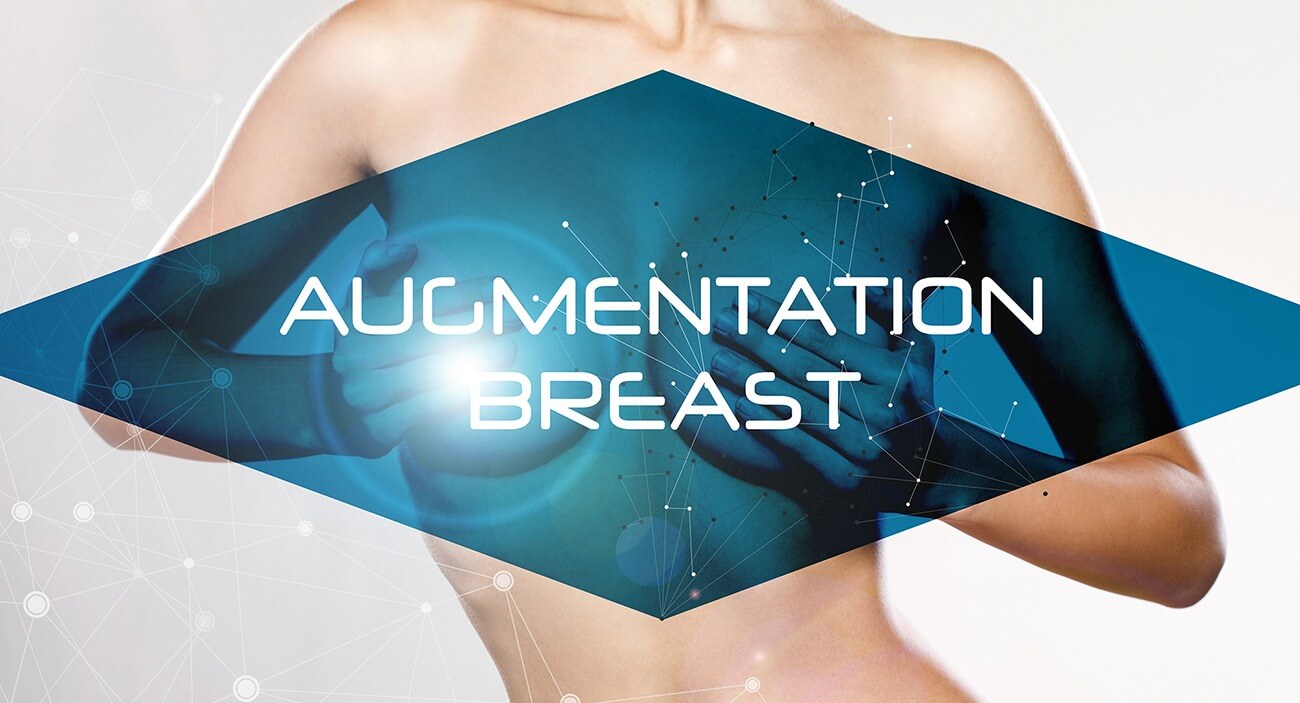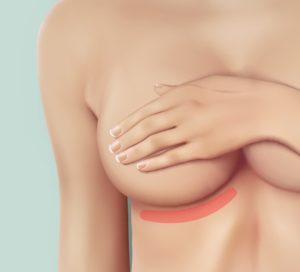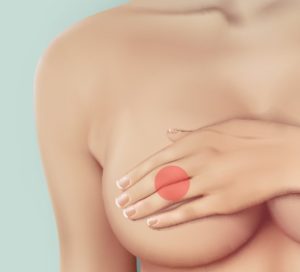The All Inclusive Guide For Breast Augmentation Surgery

The breasts are essential in the appearance of the female physique. They are the center of grace, the visual milestone of fertility, and most importantly serve for a nurturing purpose.
The public opinion on the breast augmentation surgery is split into contradicting sides of normalization and stigma of the surgical procedure. Without further ado, the following article, we will discuss the breast augmentation surgery from various aspects, from history to benefits and risks, process and finally, and the varying costs of the surgery.
What is breast augmentation Surgery?
Breast augmentation is a cosmetic surgical procedure that focuses on enhancing the size of the breast to make them appear fuller by implanting saline or silicone under the fat or muscle tissue [1].
Breast augmentation procedure
It revolves around the placement of an implant through creating an incision, as a port to insert the implant [3]. There are three main types of incisions. After securing the implant in the created sac, saline implants are filled after placement, whereas silicone implants are pre-filled. Stitches and bandages with surgical tape and dermal adhesives will close the incision.
What is the best material for a breast implant?
The two current materials most familiar are silicone and saline [1]. Each of the elements has its own benefits and own downsides, and it’s up to the patient and the surgeon to procure a decision together. The first difference is that the material making the content of the implant is the varying factor. Whether saline or silicone, the exterior of the implant is made of the standard silicone.
1- Saline implants
Saline implants are implants filled with saltwater. Prior to filling the implants with saline water, they are placed empty and are then filled with saline water after securing the placement.
Saline implants are available to women starting from the age of 18 years and onward.
2- silicone implants
Silicone implants are pre-filled, unlike saline implants, with silicone gel and placed as a full sac in the desired location. Silicone gel as a material is has a sticky thick fluid consistency that is thought to mimic the texture of human fat, making silicone implants a popular option among women for its natural feel.
Saline implants vs silicone implants
1- Rupturing
Rupture can occur in both materials, but silicone is more susceptible to this. The tearing can become apparent in saline implants which allows for early intervention. In the case of silicone implants, it don’t appear unless the patient runs annual MRI scans to track the progress of the implant. This may seem as an advantage at first glance, it’s essential to understand that the silicone gel can penetrate in organs and it is hard to remove if it had been there for a long time.
Saline implants can be in your favor if you don’t plan on committing to annual MRI scans to monitor the implants.
2- Costs
This may already be obvious, but saline implants cost relatively less than silicone implants. The difference in the cost is due to the cost of the material. Silicone gel requires much more to create than would a sterile saline solution.
3- Natural appearance
Although both implants look natural, silicone implants have a more natural attract than saline implants due to the texture of silicone gel, and the recent innovations of cohesive silicone gel.
Saline implants have a heavier firmer look since they’re often overfilled as an immunity precaution to rupturing.
Indeed, if you’re interested in getting the most natural aesthetic result, you should consider silicone implants. However, if you prefer a firmer more substantial look, then saline implants are what you should look into.
4- breast tissue
For someone with not much existing breast tissue, silicone implants are the superior option. Saline implants have a higher tendency to wrinkle and ripple due to having a higher viscosity value in comparison to silicone implants. For patients with more breast tissue, saline implants are an ideal option as they are less likely to show rippling.
5- Age
According to the FDA, silicone implants are suitable for women over 22 years of age. Saline implants are available option for women of ages 18 and older. There are no health factors that create differences. However, implant manufacturers refuse to cover warranty for patients younger than 22 years of age. Thus, getting silicone implants at the age of 18 is legal.
6- Variety of shapes
Silicone implants come in more varying shapes than do saline implants as silicone gel is far more form-stable than is saline water. For a more specific look in mind, it’s better to opt for silicone implants.
Breast augmentation incisions
There are three types of incisions through which implants can vary in insertion. The incisions vary depending on numerous factor, the personal anatomy, aesthetic result the patient is seeking for, and overall personal health. Choosing the method of placement can be a matter of preference in some cases while in others, it is confined with no flexibility. It all depends on the type of implant , anatomy, and general health.
Placing the implant
The implant is typically placed into two positions, either breast tissue or beneath the chest muscles. This varies according to the type of implant, the shape desired and personal anatomy.
The three standard methods of incision placements in breast augmentation:
1- transaxillary Incisions
most desired method as it’s the only method that doesn’t leave any scars on the breast or near it as the wound is placed near the armpit. it is an ideal option in the following cases [1] [2]
1–patients who haven’t had breast enhancement procedures before,
2– patients who aren’t interested in a breast lift in the near future, and
3– patients who are opting for saline implants over silicone implants.
This method has many pros over alternative options. The biggest pro has to do with nipple and breast sensations. Since a transaxillary wound is on the armpit, distant from the nerves responsible for the sensation of the breast, it is one approach that is sure to eliminate numbness or nerve damage completely.
 Some of the common drawbacks of the surgery include less precision in work as the surgeon is unable to see or feel the breast tissue to secure the implant. Loss of sensation in the armpit area is a common side effect, which, in comparison to nipple sensation and breastfeeding issues in the future, is a feeble inconvenience. An additional drawback would be the inability to use the location of the incision for future subsequent surgeries.
Some of the common drawbacks of the surgery include less precision in work as the surgeon is unable to see or feel the breast tissue to secure the implant. Loss of sensation in the armpit area is a common side effect, which, in comparison to nipple sensation and breastfeeding issues in the future, is a feeble inconvenience. An additional drawback would be the inability to use the location of the incision for future subsequent surgeries.
2- Inframmary incisions
 Inframammary Incision
Inframammary Incision
The second type of incision placement is the inframammary incision which occurs under the breast on the breast crease where the breast meets the chest. This approach is ideal for silicone implants a lot more than transaxillary implants. The technique of the approach creates a butterfly effect of benefits not existing in the other techniques. It does not cause any nerve damage or sensation loss to the nipple or create obstacles in breastfeeding. The scar, although is near the breast is not visible as the breast fold would hide it. However, unlike the transaxillary approach, this approach allows for more precise placement of the implant. Furthermore, the position of the incision allows the use of location in subsequent surgical procedures.
3- Areolar and periareolar incisions
 AreolarIncision
AreolarIncision
The surgeon creates a circular opening where the intersection of the areola and surrounding skin meet. In some cases, he creates the incision around half the areola in a semi-circle style (Periareolar Incision), and inserts the implant through it. As the small size of the incision in comparison to alternatives, the healing rate is faster. In addition, the scars of this type of approach are hard to notice as they blend with the natural colour of the areola. Owing to the central position of the areola allows for high accuracy, the surgeon can carefully place the implant. The wound location again allows for subsequent surgeries. The cons of this approach make it less desirable. The surgery is not ideal for patients with small nipples nor for Women looking to breastfeed in the future as it impacts the process of breastfeeding and decreases sensation in the nipples and possibly create numbness in the area as a consequence of the nerve severing in the nipples and milk ducts. In the case of non-steady healing, the scar will not blend with the surrounding tissue; instead, it will acquire a hard visible texture.
How to care for breast implants after a breast augmentation?
Breast augmentation post-op care is an important aspect of recovery and can impact the results even years down the line. For a safe and free of complications recovery, the Vera Clinic has prepared a list of post-op care in an easy to digest format.
During the first few days
During the first few days, the surgeons recommend that patient get as much rest as possible. Maintain a tranquil state of mind and observe any abnormal symptoms. Patients should have an assistant through this period, a friend or a family member. On top of all this, look to the leaflet of breast enhancement post-op care for information on how to alleviate most of the discomfort symptoms and for a smooth recovery with no complications.
Medications
1- Nausea
The procedure is typically a procedure performed under the effect of general anesthesia. Nausea often takes over once the anesthetic begins to wear off. The surgeons will prescribe anti-nausea medications, and indicate their use for the patient to eliminate the feelings of nausea subside. Patients can take the anti-nausea medication every six hours for the first 48 hours. They may not need the medication before 48 hours, nausea can subside much earlier, but the period varies from one person to the other.
2- Pain
The pain will also become an apparent symptom as the effect of the anesthetic wears off from the body. The pain will most be felt around the place of operation; it’s normal and not a source of worry. To prevent the pain, the surgeons will prescribe pain killer medications to take when patients begin to feel unbearable discomfort. Generally, over the counter medications such as ibuprofen and cold compresses can alleviate pain. However, if neither solution is reducing the pain, patients should resort to the prescribed painkiller medications and follow the instructions.
3- Muscle cramping
Muscle cramping and muscle aches are common symptoms after breast augmentation surgery. Again, the cramping should not be a cause for worry. In the post-op care package, doctors will prescribe a muscle relaxant to help relieve muscles and eliminate discomfort from cramps. Patients can apply the relaxants on the back, neck, shoulders, and chest. Muscle relaxants and pain killers should not be mixed together. Patients should create a minimum of an hour time gap between the intake of either medication. The separation prevents the rise of uncomfortable symptoms such as disorientation or drowsiness.
4- Wound infection
Wound infection is among the biggest fears patients have. Luckily, they can avoid any infections by following a strict aftercare routine. The doctor will prescribe antibiotics and provide a sterilization routine to keep the surgical site clean.
Exercise, Sleep, and Personal Hygiene
1- exercise
Patients during the first few days of recovery should remain comfortable. Restrict movement to the bare minimum of walking, standing, and sitting and activities that do not require big movements. While big movements threaten the healing of the wound, small movements help prevent clotting of the blood. To promote healing prevent the use of the arm and chest muscles. Do not carry weights more than 2 kilos; this includes lifting yourself up, carrying children, and any activity that requires the lifting a heavy object. Patients can resume daily activity after the first week of recovery if they followed their surgeon’s instructions. yet, lifting of heavy objects and strenuous physical activity is not permissible yet unless the surgeon permits that.
2- Sleep
Most surgical procedures require patients to maintain a particular position for optimal recovery. Likewise, breast augmentation will have patients sleeping on their back for several weeks after surgery. Sleeping in the stomach or sides will hinder recovery as it can rupture the wound.
3- Personal hygiene
Personal hygiene is crucial as it eliminates infection, but if done incorrectly, can actually cause it. The breast augmentation post-operation instructions will include a thorough explanation regarding handling wound dressings, showering, and surgical bras. Starting on the second day after surgery, patients can remove the bandages. However, they should not remove or alter the steri-strip bandages placed along the incisions. The patient can shower with the necessity of applying dry bandages on the incisions carefully. However, Bathing, hot showers, and swimming pools are not allowed for several weeks to reduce the risk of infection. Patients will get a surgical bra, a medical bra to support the implants and fasten wound healing.
What lifestyle changes do I need to make after breast augmentation to accelerate healing?
Patients should stop consumption of alcohol, smoking, and use of blood-thinning medications for a minimal period of 10 days for safe recovery. The Majority of medications in the post-op package do not blend well with alcohol. Blood thinners, such as aspirin increase the risk of bleeding. Finally, cigarettes, in addition to alcohol, slow down recovery.
How long do saline and silicone breast implants last?
The average life expectancy of a breast implant, whether silicone or saline is between 10 to 20 years. They do not stay for a lifetime. Although they have the potential to remain intact for two decades, the average life span is around ten years. Within ten years, the implants will be in need for renewal.
Breast augmentation recovery timeline
Recovery rates vary between patients, but the period of recovery in breast augmentation occurs apace in comparison to other types of cosmetic surgery. Although patients are discharged almost immediately after stabilising post-surgery, they aren’t ready to resume daily activity.
Smooth vs textured implants?
Implants can either be smooth or textured and each possesses their unique benefits to address the different cosmetic needs. Saline implants exclusively come with a smooth textured surface. Only silicone implants come as textured or smooth surfaces. Textures implants allow for more grip which is beneficial when considering shaped implants in contrast with the regular implants.
How much does breast augmentation cost, and what are the best countries to get the procedure done?
There are several countries that have earned a name in the field of plastic surgery. While the UK, Europe, and the US, are countries well known for high medical quality operations, However, the high costs of the procedure have led their citizens to seek medical care abroad. In the UK the average breast augmentation surgery would cost around £4000-£7000, excluding consultation and medication fees. The price is exclusively for the surgical procedure. In the rest of Europe, a breast augmentation would oscillate between $5,000 to $10,000, likewise excluding extra medication fees and consultation. Brazil is a popular destination for breast implants, the surgery would cost around $4,731 and $5,260. Turkey, that has become exceedingly successful in the various sectors of tourism including medical tourism, the surgery can cost around $3,360 to $4,500.
Do breast implants affect breastfeeding?
Breastfeeding problems are not necessarily associated to breast augmentation unless the implant incision was around the areola. Discuss your fears with your surgeon to choose the ideal surgical approach that will not affect your over-all well being or plans for the future.
In summary
Breast augmentation is a surgery that alters the size of the breast through increasing the size. Typically there are exclusively two types of breast implants: Saline implants and Silicone implants. Both implants are made of silicone shells, however, the content of the shell varies. Both the patient and the surgeon can decide the the type of implant together. Each technique has its own benefits.
Contact the Vera Clinic
For more information on breast augmentation and professional guidance, contact the Vera Clinic.

